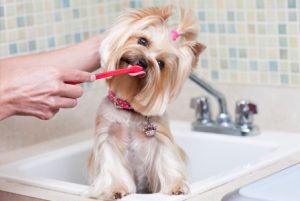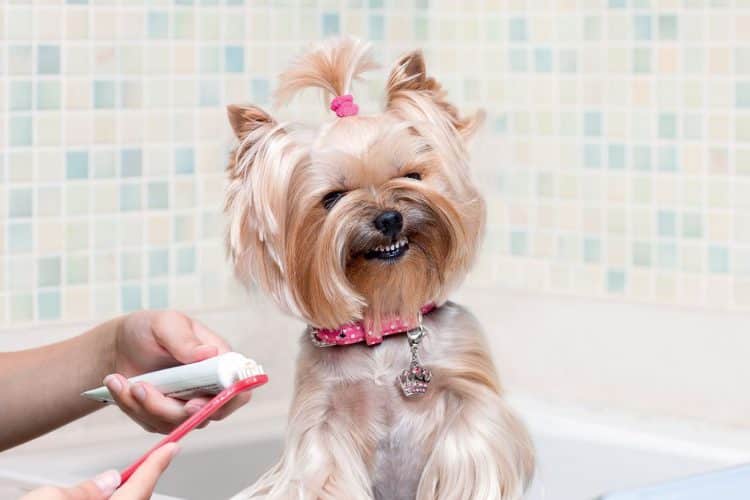The most effective dental care you can give to your pet is daily brushing. By the age of 3 most pets are showing signs of dental disease. When plaque and tartar build up and spread under the gum line, oral and systemic infection can occur. By brushing daily, you can limit the progression of dental disease and may even avoid the need for a dental cleaning under anesthetic (or at least prolong the frequency between dental cleanings).
What you need:
- A tooth brush: You can either use a pet specific tooth brush or a soft bristled childs tooth brush is also good.
- Tooth Paste: Always use a pet specific toothpaste. These are formulated to be safe for your pet to swallow. Flavours include chicken and beef which most pets really enjoy.
How to brush the teeth
- Start by gently handling the muzzle area for a few seconds on a regular basis. For good results choose “quiet times” only for handing your pets’ mouth and muzzle area.
- Next, introduce a pet toothpaste. Apply a small amount of tooth paste to your finger and try “brushing” your pets teeth. Start with the canine (fang) teeth and gradually work around the entire mouth. Be sure to rub the gums as well as the teeth.
- Once your pet is comfortable with this you can start using a tooth brush. Apply the toothpaste onto the brush and slightly push the paste into the bristles. Using a gentle circular motion start brushing the canine teeth at the gum margin.
- Then start to move under the cheek towards the back on the mouth continuing to brush the upper and lower teeth, as well as the gums. You do not need to try to get the insides of the teeth or mouth, your pet’s tongue will move some toothpaste over the insides of the teeth.
- Finally, brush the front teeth. Take a hold of the muzzle and lift the upper lip. Use an up and down motion on the front teeth.
- Reward your pet with praise after the brushing is complete. This will promote brushing as a positive event and it will enhance the bond you share with your pet.



